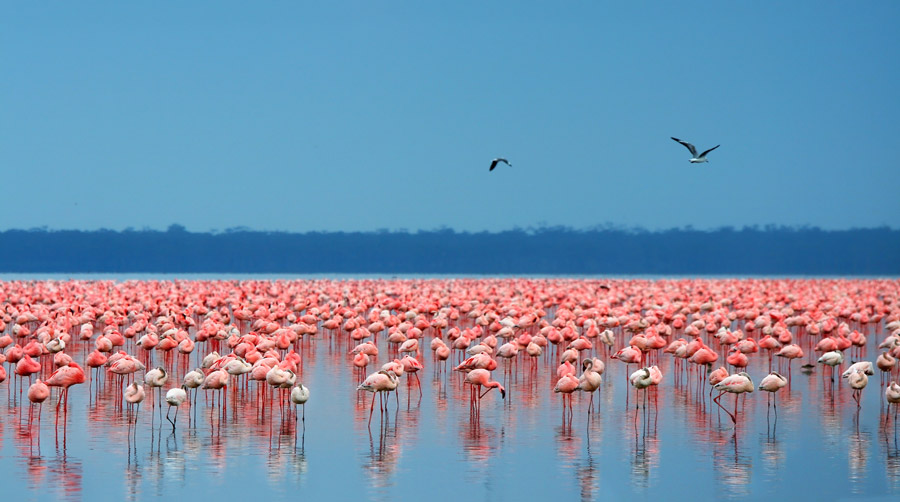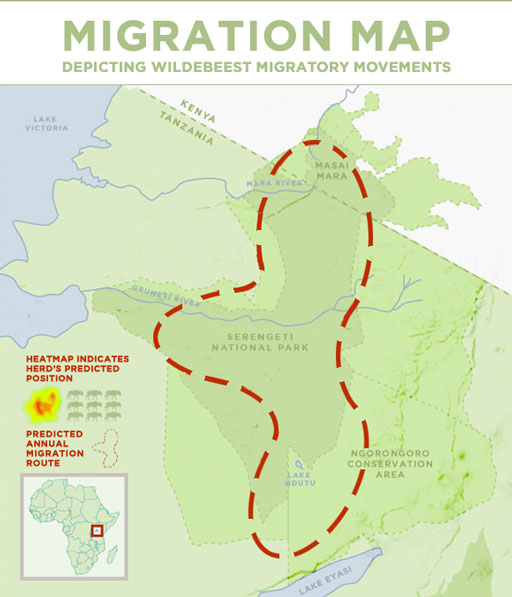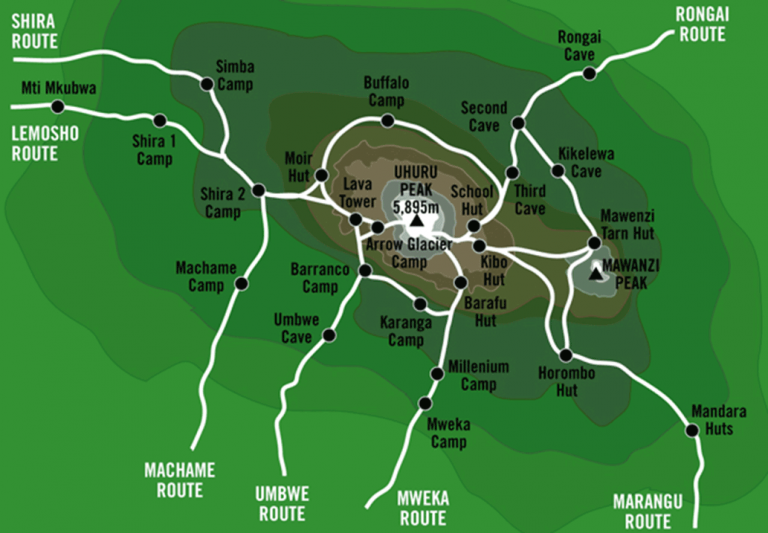The Place for Rhinos and Flamingos
Lake Nakuru National Park is famous for the large population of flamingos that thrive on the abundance of algae. When the water levels are right, there can be two million flamingos along the banks of the lake. The lake is known for rhinos; while the park was the focus of “Rhino Rescue,” a charity dedicated to saving the world’s rhinos. It is not uncommon to see 20 rhinos in a single game drive. It is one of the best places in the world to see rhinos.
 In addition to its 400 species of birds, Lake Nakuru National Park is home to 50+ mammal species, and over 500 species of flora. This park is famous for the flocks of Greater and Lesser Flamingos that gather around the lake, sometimes with as many as 2 million! You can find this great pink mass around the lake for a good part of the year, as these iconic birds stay mostly within the Rift Valley, migrating from lake to lake. Because Lake Nakuru National Park was fenced to protect endangered Rhinos and Giraffes, it can’t support African Elephants, so you won’t find any here!
In addition to its 400 species of birds, Lake Nakuru National Park is home to 50+ mammal species, and over 500 species of flora. This park is famous for the flocks of Greater and Lesser Flamingos that gather around the lake, sometimes with as many as 2 million! You can find this great pink mass around the lake for a good part of the year, as these iconic birds stay mostly within the Rift Valley, migrating from lake to lake. Because Lake Nakuru National Park was fenced to protect endangered Rhinos and Giraffes, it can’t support African Elephants, so you won’t find any here!
You are guaranteed to see: White Rhinos, African Buffalos, Rothschild Giraffes, Zebras, Impalas, Olive Baboons, Vervet Monkeys, Waterbucks, a variety of water birds (Yellow-billed Pelicans, Marabou Storks, Hammerkops, Fish Eagles, etc.)
Common in the park: Hyenas, Jackals, Lesser Flamingos, Hippopotamus, Pythons
If you are lucky you may see: Lions, Leopards, Black Rhinos, Wild Dogs, Colobus Monkeys, Cheetahs
Don’t forget the plants! In Lake Nakuru National Park you can see a wide variety of beautiful landscapes: from grasslands to dense forests, and the very rare tarconanthus bushlands and euphorbia forests
Lake Nakuru National Park is officially classified as dry sub-humid to semi-arid, which basically means it’s not too wet and not too dry, or too hot or cold. The climate in this area is really beautiful, you won’t fry in the sun here like you would in Amboseli or Tsavo. You are likely however, to get rained on. Late afternoon is the most common time for rain showers. If you want the best chance of avoiding these rains, consider coming some time between July to December or January to March. However, avoiding the rain is not guaranteed, even during these dryer months. Also, these months are in the peak tourism season, so the park will be very crowded with tourist vehicles. If you don’t mind a little rain and you want to avoid the crowd, come in December or April to June (you’d also save money coming at this time!). Another great thing about this park- it’s fenced, so even during the wet months you will see wildlife because they cannot migrate away from the park.
Activities in Lake Nakuru
- Game Driving
- Camping
- Picnic
- Photography
Viewpoints (established- means you can park your vehicle, get out, and enjoy the view, take photos, even have a picnic on picnic tables present at these sites):
- Lion Hill
- Baboon Cliff
- Out of Africa
Hills (not established viewpoints):
- Enasoit
- Honeymoon
- Lion Ridge
Waterfalls:
- Makalia Falls (you can leave your vehicle here too, and take a short hike over to the falls)









